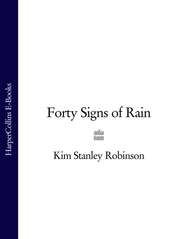По всем вопросам обращайтесь на: info@litportal.ru
(©) 2003-2024.
✖
The Complete Mars Trilogy: Red Mars, Green Mars, Blue Mars
Автор
Год написания книги
2018
Настройки чтения
Размер шрифта
Высота строк
Поля
Part Three: The Crucible (#u4e50e46d-218e-5c01-875d-a6031b1fe89f)
Part Four: Homesick (#uaeb2181c-7fdc-5347-80e6-c66fd8c4cb44)
Part Five: Falling Into History (#u847317aa-0404-5487-9439-87f9684b98a1)
Part Six: Guns Under the Table (#uec5bc075-8e8f-56fd-a2ba-663ec4b3d37f)
Part Seven: Senzeni Na (#litres_trial_promo)
Part Eight: Shikata Ga Nai (#litres_trial_promo)
Green Mars (#litres_trial_promo)
Title Page (#litres_trial_promo)
Dedication (#litres_trial_promo)
Part One: Areoformation (#litres_trial_promo)
Part Two: The Ambassador (#litres_trial_promo)
Part Three: Long Runout (#litres_trial_promo)
Part Four: The Scientist As Hero (#litres_trial_promo)
Part Five: Homeless (#litres_trial_promo)
Part Six: Tariqat (#litres_trial_promo)
Part Seven: What Is To Be Done? (#litres_trial_promo)
Part Eight: Social Engineering (#litres_trial_promo)
Part Nine: The Spur of the Moment (#litres_trial_promo)
Part Ten: Phase Change (#litres_trial_promo)
Blue Mars (#litres_trial_promo)
Title Page (#litres_trial_promo)
Dedication (#litres_trial_promo)
Part One: Peacock Mountain
Part Two: Areophany
Part Three: A New Constitution
Part Four: Green Earth
Part Five: Home at Last
Part Six: Ann in the Outback
Part Seven: Making Things Work
Part Eight: The Green and the White
Part Nine: Natural History
Part Ten: Werteswandel
Part Eleven: Viriditas
Part Twelve: It Goes So Fast
Part Thirteen: Experimental Procedures
Part Fourteen: Phoenix Lake
Keep Reading (#litres_trial_promo)
About the Author (#litres_trial_promo)
Also By Kim Stanley Robinson
About the Publisher
RED MARS
Kim Stanley Robinson
Dedication (#ulink_d4618cab-ee92-51ba-9377-1c18ba43ecf2)
For Lisa
PART ONE Festival Night (#ulink_62438ae5-c0c5-5015-8f3d-0954ea96eb28)
Mars was empty before we came. That’s not to say that nothing had ever happened. The planet had accreted, melted, roiled and cooled, leaving a surface scarred by enormous geological features: craters, canyons, volcanoes. But all of that happened in mineral unconsciousness, and unobserved. There were no witnesses – except for us, looking from the planet next door, and that only in the last moment of its long history. We are all the consciousness that Mars has ever had.
Now everybody knows the history of Mars in the human mind: how for all the generations of prehistory it was one of the chief lights in the sky, because of its redness and fluctuating intensity, and the way it stalled in its wandering course through the stars, and sometimes even reversed direction. It seemed to be saying something with all that. So perhaps it is not surprising that all the oldest names for Mars have a peculiar weight on the tongue – Nirgal, Mangala, Auqàkuh, Harmakhis – they sound as if they were even older than the ancient languages we find them in, as if they were fossil words from the Ice Age or before. Yes, for thousands of years Mars was a sacred power in human affairs; and its color made it a dangerous power, representing blood, anger, war and the heart.
Then the first telescopes gave us a closer look, and we saw the little orange disk, with its white poles and dark patches spreading and shrinking as the long seasons passed. No improvement in the technology of the telescope ever gave us much more than that; but the best Earthbound images gave Lowell enough blurs to inspire a story, the story we all know, of a dying world and a heroic people, desperately building canals to hold off the final deadly encroachment of the desert.
It was a great story. But then Mariner and Viking sent back their photos, and everything changed. Our knowledge of Mars expanded by magnitudes, we literally knew millions of times more about this planet than we had before. And there before us flew a new world, a world unsuspected.
It seemed, however, to be a world without life. People searched for signs of past or present Martian life, anything from microbes to the doomed canal-builders, or even alien visitors. As you know, no evidence for any of these has ever been found. And so stories have naturally blossomed to fill the gap, just as in Lowell’s time, or in Homer’s, or in the caves or on the savannah – stories of microfossils wrecked by our bio-organisms, of ruins found in dust storms and then lost forever, of Big Man and all his adventures, of the elusive little red people, always glimpsed out of the corner of the eye. And all of these tales are told in an attempt to give Mars life, or to bring it to life. Because we are still those animals who survived the Ice Age, and looked up at the night sky in wonder, and told stories. And Mars has never ceased to be what it was to us from our very beginning – a great sign, a great symbol, a great power.











